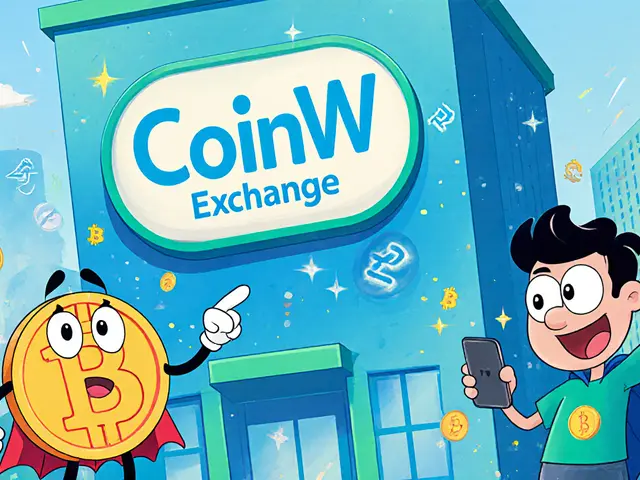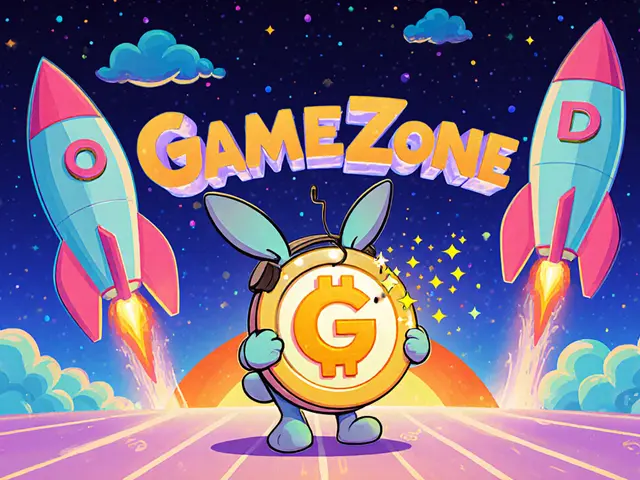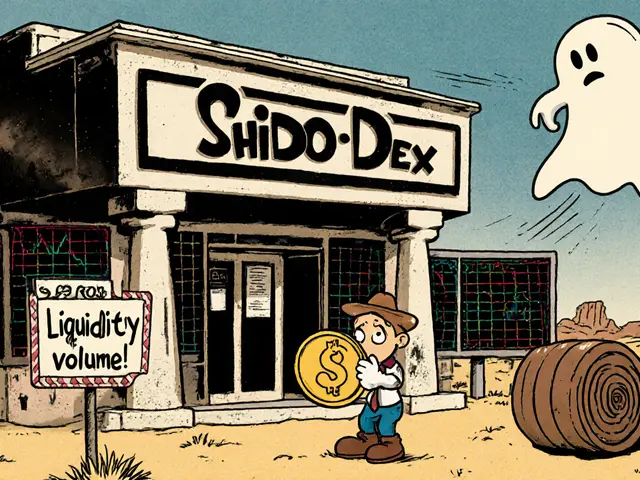
Bitcoin Halving Calculator
Did you know? Bitcoin's reward halves every ~210,000 blocks (~4 years). After the 2024 halving, the reward dropped to 6.25 BTC/block. The next halving is expected in 2028, reducing it to 3.125 BTC/block.
Block Reward Systems are the economic engine that keeps blockchain networks alive. They pay miners or validators for securing the ledger and processing transactions. As the crypto world matures, these incentives are about to undergo a seismic shift.
Why Block Reward Systems Still Matter
Today, most public blockchains rely on two sources of income for participants: newly minted coins (the inflationary reward) and transaction fees collected from users. The balance between these two determines how much security a network can afford and how affordable it is for everyday users.
In Bitcoin, the original design by Satoshi Nakamoto, the newly minted portion dominates early on, gradually shrinking through a predictable halving schedule. Other chains, like Ethereum, blend block rewards with proof‑of‑stake issuance, but the principle stays the same - reward systems shape network health.
Halving Countdown: From 50BTC to Zero
Bitcoin’s reward started at 50BTC per block in 2009. Every ~210,000 blocks - roughly four years - the reward halves. We saw the first halving in 2012, then 2016, 2020, and most recently 2024, which brought the reward down to 6.25BTC. The next halving, expected in 2028, will cut it to 3.125BTC.
When the last satoshi is mined around 2140, miners will earn block reward systems solely from Transaction Fees. This transition forces miners to cover electricity, hardware depreciation and operational costs only through what users are willing to pay.
Early adopters of fee‑only models, such as Bitcoin Cash and some newer proof‑of‑work chains, already show higher fee volatility. The lesson? As the inflationary cushion disappears, fee markets become the lifeblood of security.
Modular Blockchains: Rewarding Specialized Layers
Modular architecture decouples data availability, consensus, and execution into separate components. Celestia pioneered this approach in 2023, offering a data‑availability layer that charges fees differently from the execution layer.
Projects like Polygon 2.0 and EigenLayer let developers plug in custom reward curves for each module. A validator might earn one reward for securing consensus, another for providing data availability, and a third for executing smart contracts.
This granularity creates new economic incentives: fast‑finality services can pay higher fees to consensus validators, while privacy‑focused layers can allocate extra rewards to data providers. The net effect is a more efficient allocation of capital across the ecosystem.

Liquid Staking and Multi‑Stream Yields
Traditional staking locks assets for a fixed period, limiting liquidity. Liquid staking protocols such as EigenLayer and Babylon issue derivative tokens (e.g., stETH) that can be traded while the underlying stake continues to secure the network.
What’s more, these protocols enable re‑staking. A validator can commit the same ETH to multiple services, earning distinct reward streams from each. This “stacked” income model dramatically improves yield for participants without sacrificing security, because each additional layer still requires honest behaviour.
Projected growth in 2025 suggests that liquid staking could capture over 15% of total proof‑of‑stake earnings across major ecosystems, reshaping the reward landscape.
Security Risks as Rewards Shrink
When block rewards dwindle, the economic moat around a network thins. If fee revenue cannot cover the cost of hashpower or staking operations, miners may shut down nodes, lowering the hash rate or validator set size. Historically, periods of low fees have coincided with increased attack attempts on smaller chains.
To mitigate this, some proposals introduce “minimum fee floors” or algorithmic subsidies that dynamically adjust based on network health metrics. Others argue for a hybrid model where a small inflationary component persists alongside fees, similar to Ethereum’s post‑merge approach.
Balancing security and decentralization remains the core challenge for future reward designs.
The Evolving Fee Market and User Experience
In a fee‑only world, users become price‑sensitive participants. During network congestion, miners prioritize higher‑fee transactions, leading to longer confirmation times for low‑fee users. This dynamic creates a market where fee prediction tools and fee‑bumping strategies (e.g., replace‑by‑fee) become essential.
Layer‑2 solutions and rollups, especially those powered by Zero‑Knowledge Proofs, compress transaction data and dramatically lower fees, making fee‑only security more viable for everyday payments.
However, reliance on rollups introduces new trust assumptions: the underlying L1 must stay secure, and any fee shortage on L1 can cascade upward, affecting rollup users.
Hybrid Reward Models: DeFi, CBDC, AI, and Interoperability
Beyond pure mining or staking, the broader blockchain economy offers additional incentive mechanisms. Decentralized Finance (DeFi) platforms reward liquidity providers with governance tokens, while yield farms combine multiple reward streams into a single strategy.
Central Bank Digital Currencies (CBDC) will likely embed programmable reward or penalty rules, such as negative interest rates, to steer monetary policy. These models differ fundamentally from open‑source block rewards but illustrate how blockchain incentives can be tailored for regulatory goals.
Artificial intelligence integration creates “compute‑as‑a‑service” rewards. Decentralized AI networks pay participants for contributing GPU cycles or data, often settling in native tokens that also serve as staking assets.
Finally, interoperability layers like Particle Network enable unified reward claims across chains, reducing friction for users who hop between ecosystems.

Regulatory Landscape and Market Growth
Clearer regulations in the EU, UK, and Asia‑Pacific are lowering the compliance barrier for innovative reward mechanisms. Surveys indicate that up to 20% of Americans would engage more with crypto if a supportive legal framework emerged.
The global blockchain market is projected to hit $1trillion by 2032, with a sizable portion dedicated to infrastructure that supports custom reward designs - from BaaS platforms to enterprise tokenization projects.
Regulators are paying particular attention to fee‑only security models because they can affect systemic risk. Transparent fee markets and auditability become regulatory focal points.
Quick Comparison of Emerging Reward Models
| Model | Primary Incentive | Security Reliance | Typical Users |
|---|---|---|---|
| Inflationary Block Reward | Newly minted coins | High (subsidized) | Early miners, PoW networks |
| Fee‑Only Reward | Transaction fees | Depends on fee volume | Late‑stage PoW, scaling‑focused chains |
| Modular Layer Rewards | Layer‑specific fees (data, consensus, execution) | Distributed across layers | Specialized validators, service providers |
| Liquid Staking + Re‑staking | Staking yields + additional service fees | Combined PoS security + service contracts | Yield‑seeking investors, protocol developers |
| DeFi & Governance Tokens | Liquidity mining, governance distributions | Economic incentives tied to protocol usage | Active traders, community participants |
Practical Checklist for Participants
- Monitor the upcoming halving schedule of your target chain - it directly impacts future fee revenue.
- Evaluate layer‑2 solutions that lower fee exposure if you rely on fee‑only income.
- Consider diversifying across modular layers to capture multiple reward streams.
- Use liquid staking tokens to stay flexible while still earning staking yields.
- Stay updated on regulatory announcements that could affect fee structures or reward taxation.
Frequently Asked Questions
Will Bitcoin miners earn enough after the block reward ends?
The answer depends on transaction volume and fee market dynamics. If Bitcoin’s daily transaction count stays high and users are willing to pay priority fees, miners can remain profitable. However, a prolonged drop in fee income could pressure hash rate and security.
How do modular blockchains improve reward efficiency?
By separating consensus, data availability, and execution, each layer can charge fees appropriate to its function. Validators can earn multiple, targeted rewards instead of a single lump‑sum, aligning incentives with the specific resources they provide.
What is liquid staking and why is it important?
Liquid staking lets you lock assets to secure a network while receiving a tradable derivative token. This keeps capital usable for other activities, such as DeFi trading or providing additional security to other protocols through re‑staking, boosting overall yield.
Can fee‑only rewards sustain network security long‑term?
They can, but only if the fee market remains robust. Projects are experimenting with dynamic fee floors, hybrid inflation, or supplemental rewards to ensure miners and validators stay motivated even when transaction volume fluctuates.
How might CBDCs influence reward designs?
CBDCs could embed programmable incentives or penalties directly into the ledger, such as negative interest rates to discourage hoarding. Unlike decentralized rewards, these mechanisms would be centrally governed, offering a different set of policy tools.





